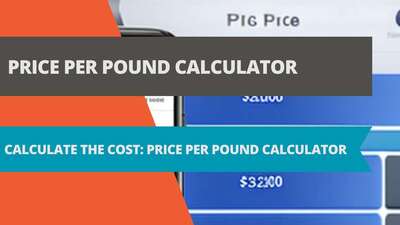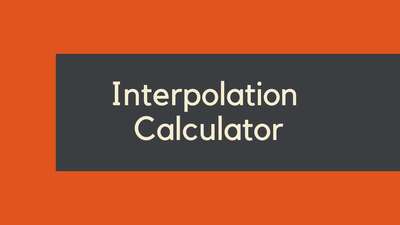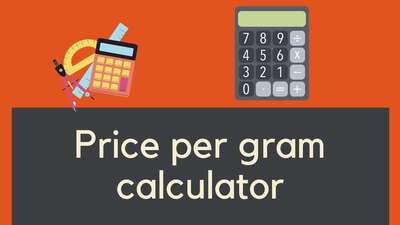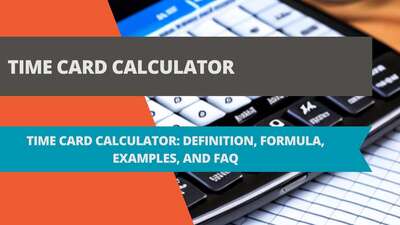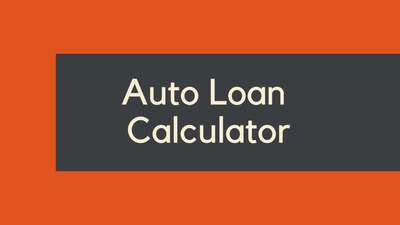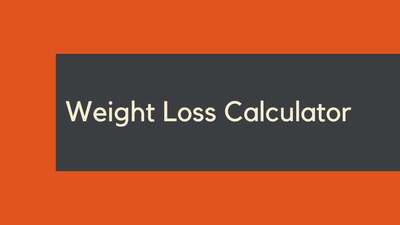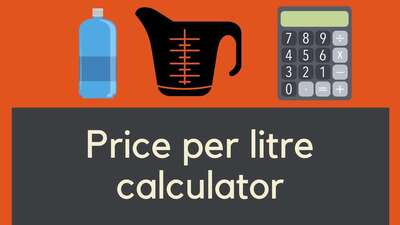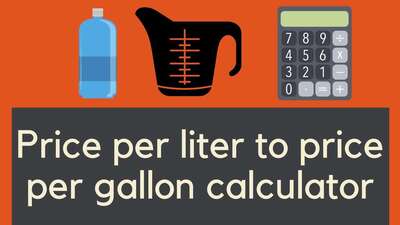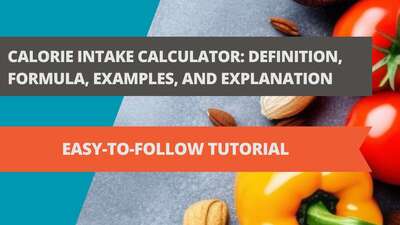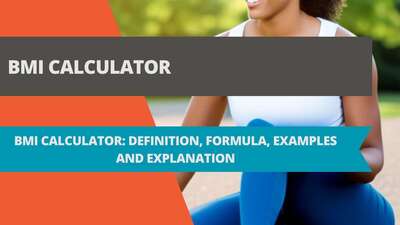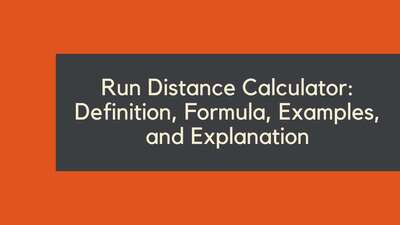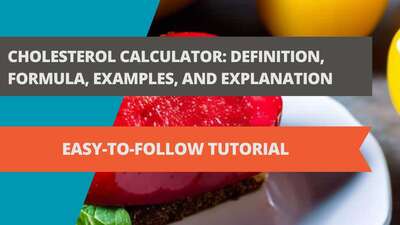Dilution Calculator: Definition, Formula, Examples, and Tips

- What is a Dilution Calculator?
- The Dilution Formula
- C1V1 = C2V2
- V2 = (C1V1) / C2
- Examples of Dilution Calculator Application
- Example 1
- C1V1 = C2V2
- V1 = (C2V2) / C1
- Example 2
- FAQ: Frequently Asked Questions
- What is a dilution calculator?
- What is the dilution formula?
- What are some examples of dilutions?
- Importance of Accurate Dilutions in Research
- Common Mistakes to Avoid
- Benefits of Online Dilution Calculators
- Historical Perspective: Dilutions Before Digital Tools
- Eco-friendly Considerations in Dilutions
- Conclusion
If you work in a laboratory or in any field that requires mixing solutions or diluting samples, you know that making accurate dilutions is crucial to getting reliable results. Dilution is the process of adding a solvent to a solution to reduce the concentration of the solute. Dilution calculations can be tricky and time-consuming, especially when dealing with multiple dilutions or different concentrations. Fortunately, there are many online dilution calculators available that can save you time and ensure accuracy. In this article, we will discuss what a dilution calculator is, how to use it, and provide examples of its application.
What is a Dilution Calculator?
A dilution calculator is an online tool that helps you calculate the concentration of a solution after dilution. It takes into account the initial concentration of the solution, the volume of the solution to be diluted, and the volume of the solvent to be added. The calculator can be used to calculate a single dilution or multiple dilutions in series. It can also be used to calculate the concentration of the final solution after multiple dilutions.
The Dilution Formula
The formula for dilution is:
C1V1 = C2V2
Where:
- C1 = initial concentration of the solution
- V1 = initial volume of the solution
- C2 = final concentration of the solution
- V2 = final volume of the solution
This formula can be rearranged to calculate any of the variables as long as the other three are known. For example, if you want to calculate the volume of the solvent to be added to the solution to achieve a certain concentration, you can rearrange the formula to:
V2 = (C1V1) / C2
Examples of Dilution Calculator Application
Let's take a look at some examples of how to use a dilution calculator.
Example 1
You have a stock solution of 10 mM of sodium chloride (NaCl) and you need to prepare a 1 mM solution. How much of the stock solution and solvent do you need?
Solution:
Using the dilution formula:
C1V1 = C2V2
We can rearrange it to:
V1 = (C2V2) / C1
Plugging in the values:
- C1 = 10 mM
- V1 = ?
- C2 = 1 mM
- V2 = 1 L (let's say we want to prepare 1 L of the 1 mM solution)
So, V1 = (1 mM x 1 L) / 10 mM = 0.1 L = 100 mL. Therefore, you need to mix 100 mL of the 10 mM stock solution with enough solvent to bring the total volume up to 1 L.
Example 2
You need to prepare a series of dilutions of a 1 M solution of sucrose, with the final concentrations of 0.5 M, 0.25 M, and 0.125 M. What are the volumes of the stock solution and solvent needed for each dilution?
Solution:
For each dilution, we can use the dilution formula to calculate the volume of the stock solution and solvent needed. Let's start with the 0.5 M dilution:
0.5 M dilution:
Plugging in the values:
- C1 = 1 M
- V1 = ?
- C2 = 0.5 M
- V2 = 1 L
So, V1 = (0.5 M x 1 L) / 1 M = 0.5 L = 500 mL. Therefore, you need to mix 500 mL of the 1 M stock solution with enough solvent to bring the total volume up to 1 L.
Similarly, for the 0.25 M dilution:
- C1 = 0.5 M
- V1 = 1 L
- C2 = 0.25 M
- V2 = 1 L
So, V1 = (0.25 M x 1 L) / 0.5 M = 0.5 L = 500 mL. Therefore, you need to mix 500 mL of the 0.5 M solution with enough solvent to bring the total volume up to 1 L.
And for the 0.125 M dilution:
- C1 = 0.25 M
- V1 = 1 L
- C2 = 0.125 M
- V2 = 1 L
So, V1 = (0.125 M x 1 L) / 0.25 M = 0.5 L = 500 mL. Therefore, you need to mix 500 mL of the 0.25 M solution with enough solvent to bring the total volume up to 1 L.
FAQ: Frequently Asked Questions
What is a dilution calculator?
A dilution calculator is a tool that helps you calculate the volume of stock solution and solvent needed to prepare a solution of a desired concentration. You input the initial concentration of the stock solution, the desired final concentration, and the final volume of the solution, and the calculator does the rest.
What is the dilution formula?
The dilution formula is C1V1 = C2V2, where C1 is the initial concentration of the stock solution, V1 is the volume of the stock solution needed, C2 is the final desired concentration, and V2 is the final volume of the solution.
What are some examples of dilutions?
Some examples of dilutions include: preparing a 1 mM solution from a 10 mM stock solution, preparing a series of dilutions from a 1 M stock solution with final concentrations of 0.5 M, 0.25 M, and 0.125 M, and preparing a 1:10 dilution of a 100 μg/mL solution.
Importance of Accurate Dilutions in Research
In scientific research, the accuracy of every procedure is crucial, and dilution is no exception. Ensuring precise dilution is foundational to guaranteeing that experimental results not only stand up to scrutiny but are also replicable in various settings.
Fields such as biology and chemistry are especially sensitive to concentration levels. Even the slightest discrepancies can dramatically alter outcomes. This is starkly evident in microbiology where a minute variation in the concentration of a substance can substantially influence the growth and behavior of microorganisms. As another example, in pharmaceutical research, the tests determining drug efficacy and toxicity are intrinsically tied to specific concentrations. Incorrect dilutions could lead to misleading results, affecting the determination of safe and effective dosages for patients.
Given these high stakes, mastering dilution techniques becomes imperative for researchers. Leveraging tools like dilution calculators not only ensures precision but also streamlines the process. By doing so, researchers can significantly enhance the overall quality and reliability of their research outputs, leading to more robust and trustworthy conclusions.
Common Mistakes to Avoid
Dilution, while seemingly simple, can be riddled with challenges if not approached with care. Researchers and technicians often fall into common traps that can compromise the accuracy of their experiments.
- Improper Mixing: After adding the solvent, it's essential to mix the solution thoroughly. Failing to do so can result in an uneven distribution of the solute, potentially affecting the consistency and accuracy of subsequent measurements and tests.
- Using Imprecise Equipment: The precision of equipment is paramount, especially when dealing with small volumes. Opting for graduated cylinders when pipettes would be more accurate can introduce errors. It's crucial to select the right tool for the job.
- Compromised Solvents: Utilizing expired or contaminated solvents is another common oversight. Such solvents can introduce unexpected variables into the experiment, leading to skewed or unreliable results.
In light of these potential pitfalls, regular calibration of equipment becomes indispensable. Moreover, adopting a meticulous technique and being acutely aware of the entire dilution process ensures that the desired concentrations are achieved with consistency. By being vigilant and avoiding these common errors, researchers can bolster the reliability and validity of their experimental outcomes.
Benefits of Online Dilution Calculators
As research methodologies grow more intricate, tools that streamline processes become invaluable. One such tool is the online dilution calculator, offering myriad benefits that go beyond mere convenience.
- Minimization of Human Error: Manual calculations, though essential to understand, are prone to human errors. Whether it's a simple mathematical miscalculation, misreading numbers, or transposing values, these mistakes can jeopardize experimental accuracy. Online dilution calculators help mitigate such errors, ensuring precise results.
- Time Efficiency: Time is a precious commodity in research. Online calculators expedite the dilution calculation process, particularly when navigating intricate serial dilutions. This efficiency allows researchers to allocate more time to actual experimentation and data analysis.
- Feature-Rich Platforms: Modern online dilution calculators aren't just about basic math. Many platforms come equipped with features such as history logs of past calculations, tailored dilution schemes based on specific experimental setups, and even integrations with other laboratory tools.
- Ubiquitous Access: Given the cloud-based nature of many online tools today, researchers can access their preferred dilution calculator from any device—be it a lab computer, tablet, or smartphone. This flexibility is especially beneficial for researchers on the move, facilitating seamless transitions between fieldwork and the lab.
In conclusion, online dilution calculators embody the intersection of technological advancement and scientific rigor, ensuring that researchers have accurate and efficient tools at their fingertips.
Historical Perspective: Dilutions Before Digital Tools
The journey of scientific advancements has always been marked by innovations that optimize tasks and enhance accuracy. The field of dilution calculations provides a striking example of this evolution.
The Age of Manual Calculations: In times gone by, the art of dilution was a meticulous process, demanding both skill and patience. Scientists often grappled with intricate mathematical equations, especially when dealing with serial dilutions. The absence of digital aids meant that researchers depended on logbooks, where each calculation was painstakingly noted. Tools like slide rules and reference charts were indispensable, serving as the primary computational aids.
The Challenges: While the manual approach was revered for the skill it necessitated, it was not without its challenges. The process was inherently time-consuming, with each calculation demanding undivided attention. Moreover, the scope for human errors, ranging from misreading charts to mathematical miscalculations, was high.
Dawn of the Digital Age: The latter half of the 20th century heralded a revolution in the form of digital calculators. These devices, though initially rudimentary, provided a marked shift in how dilutions were calculated. Scientists could now compute complex equations with relative ease, drastically reducing the time and potential errors associated with manual calculations.
As we stand today, the evolution has continued with specialized online dilution calculators. These tools, tailored for specific scientific tasks, offer a blend of speed, accuracy, and convenience, showcasing how far we've come from the days of logbooks and slide rules.
Eco-friendly Considerations in Dilutions
In today's world, as environmental concerns take center stage, every sector is re-evaluating its practices, and scientific research is no exception. The domain of dilutions offers a unique vantage point to integrate eco-friendly practices into laboratory workflows.
Understanding Waste: One might overlook the repercussions of excessive dilution, but the reality is that it can lead to significant waste. Producing more diluted solution than required not only consumes resources but also leads to the disposal of unused solutions. This wastage, especially when using large volumes of solvents, can put undue strain on the environment.
The Environmental Toll of Solvents: Beyond sheer volume, the nature of the solvents used also matters. Some solvents, when improperly disposed of, can contaminate water sources, harm aquatic life, or release toxic fumes. Being judicious in solvent selection and minimizing their use can make a notable difference in a lab's environmental impact.
The Role of Precision: The key to marrying scientific accuracy with environmental responsibility lies in precision. By meticulously calculating and preparing only what's needed, researchers can achieve their experimental objectives while minimizing waste. This dual benefit underscores the importance of mastering dilution techniques.
Online Dilution Calculators as Eco-advocates: In this green endeavor, online dilution calculators emerge as unsung heroes. By providing exact calculations, they ensure that researchers prepare only the required volumes, thus preventing overuse and waste of resources. This not only conserves materials but also reinforces an environmentally-conscious lab culture.
In conclusion, as the scientific community becomes increasingly aware of its ecological footprint, tools and practices that promote both accuracy and sustainability will be of paramount importance. The realm of dilutions, with its blend of precision and conservation, offers a glimpse into this harmonious future.
Conclusion
A dilution calculator can be a handy tool in the laboratory, saving time and reducing the potential for error when preparing solutions of a desired concentration. By understanding the dilution formula and using a dilution calculator, scientists and researchers can ensure that they are preparing solutions accurately and consistently.
Whether you are a student just starting out in the lab or an experienced researcher looking to streamline your work, a dilution calculator is a valuable resource that can help make your experiments more efficient and accurate.





![Car Loan Calculator: Definition, Formula, Examples, and FAQs [2023 Guide]](/images/page/400/car-loan-calculator-13.jpg)


